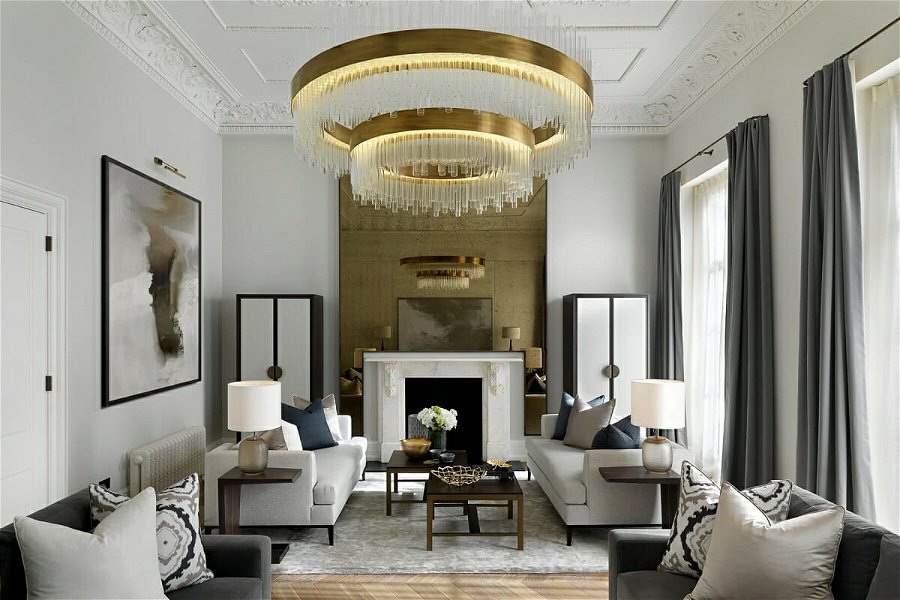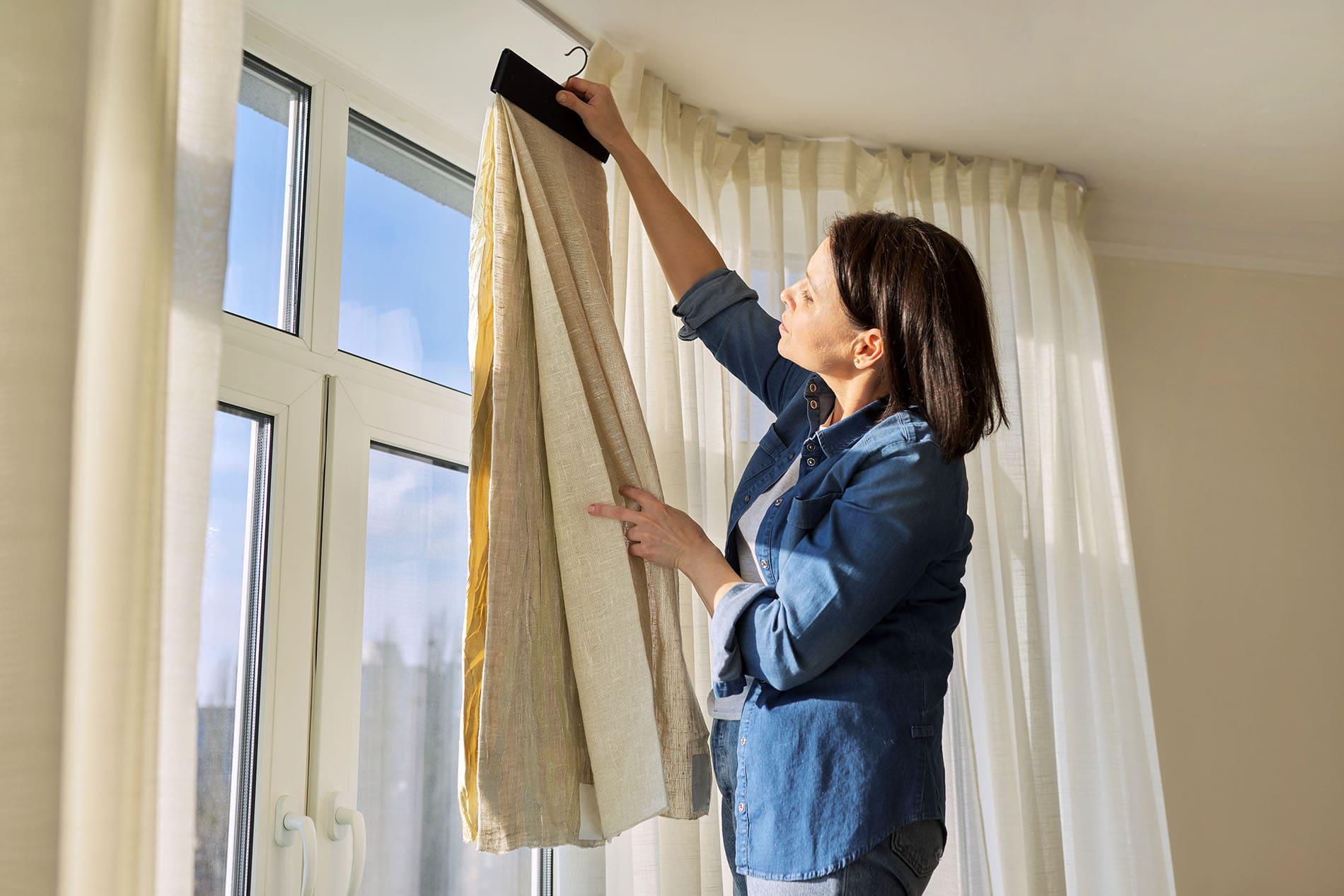The Ultimate Guide to Blinds: Kinds, Benefits, and Picking the Right Fit for You
The globe of home window therapies is huge and varied. Blinds are available in various styles, each offering unique advantages for various settings. Understanding these options is crucial for making educated decisions. Furthermore, variables like product option and room capability play a significant role. As one considers the ideal balance in between looks and practicality, the subtleties of measuring and keeping blinds additionally become crucial elements. What should one focus on when picking the ideal home window solution?
Kinds of Blinds: A Thorough Introduction
Blinds function as both aesthetic and practical aspects in indoor design, providing different options to match diverse preferences and needs. Amongst one of the most preferred kinds are Venetian blinds, identified by straight slats that can be changed for light control and personal privacy. Roller blinds, recognized for their simpleness and adaptability, come in an array of patterns and products, making them ideal for standard and contemporary settings. Vertical blinds, generally used for larger home windows or moving doors, permit easy modification and are usually made from textile or vinyl.
Roman blinds, with their classy folds, include a touch of refinement to any kind of space, while cellular tones supply insulation and power effectiveness. Furthermore, bamboo blinds use a natural, environmentally friendly choice, instilling areas with heat. Each type has one-of-a-kind features and styles, guaranteeing property owners can locate the best suitable for their particular style and practical demands.
Advantages of Putting Up Blinds in Your Home
The setup of blinds in a home provides a number of substantial advantages. They provide boosted personal privacy control, allowing home owners to manage visibility from the exterior. Additionally, blinds add to power efficiency by aiding to take care of indoor temperature levels, decreasing the dependence on home heating and cooling down systems.
Improved Personal Privacy Control
Setting up blinds provides a significant benefit in personal privacy control when home owners look for to enhance their living rooms. Blinds provide a functional option for regulating visibility from both the interior and outside of the home. By changing the slats or elevating the blinds, people can quickly take care of the amount of light getting in while all at once obstructing the sight from outdoors. This adaptability enables home owners to produce a comfortable ambience without sacrificing all-natural light. Additionally, various styles and products are available, ensuring that home owners can choose choices that effortlessly blend with their design while improving personal privacy. Inevitably, the setup of blinds acts as an efficient ways to guard individual room, urging relaxation and tranquility of mind within the home environment.
Energy Efficiency Enhancement
Setting up blinds not just boosts privacy yet likewise significantly adds to power effectiveness in the home. By managing all-natural light and reducing heat transfer, blinds can assist preserve a constant interior temperature. During warmer months, shutting blinds can block out extreme sunlight, therefore reducing the reliance on air conditioning. On the other hand, in cooler months, they can supply insulation by capturing warmth, lowering heating costs. Additionally, energy-efficient blinds, such as cellular shades, are created especially to reduce power loss. By buying quality blinds, property owners can create an extra comfortable living environment while additionally decreasing power costs. Ultimately, the installation of blinds works as a useful remedy for those looking for to enhance both comfort and energy efficiency in their homes.
Exactly how to Pick the Right Blinds for Each Space
How can one figure out the most appropriate blinds for each room in a home? The option procedure starts with evaluating the area's objective and environment. In living locations, versatile blinds that permit light control while ensuring privacy are ideal. In bedrooms, blackout blinds can enhance rest quality by blocking out external light.
Washrooms and kitchens need moisture-resistant choices to hold up against moisture, making plastic or synthetic wood blinds suitable selections. In addition, the wanted visual plays an essential role; working with blinds with the space's decor enhances the general setting.
Think about the amount of natural light each space gets; lighter blinds may be better for dark areas, while darker alternatives can add warmth to sunlit spaces. Ultimately, comprehending particular needs and choices for functionality and design will direct homeowners in making educated decisions customized to every area's distinct needs.
Material Options: Wood, Vinyl, Textile, and More

Timber Blinds Benefits
Wood blinds are a popular selection among home owners looking for a blend of looks and pop over here functionality. One significant advantage of timber blinds is their all-natural appeal, supplying a cozy and inviting appearance that enhances any interior style. They are readily available in different coatings and shades, enabling customization to match personal style. Additionally, timber blinds give outstanding light control and privacy, as their slats can be quickly adjusted to filter sunshine while maintaining privacy. Their sturdiness is one more benefit; with proper treatment, timber blinds can last for many years without losing their charm (Phoenix window treatments). Additionally, they have shielding properties, assisting to control interior temperatures and possibly lowering energy costs. Generally, timber blinds merge style and usefulness, making them a suitable selection for several households
Vinyl Durability Features
Plastic blinds stand apart for their outstanding longevity, making them a functional choice for different environments. These blinds are resistant to dampness, making them excellent for areas such as bathroom and kitchens where humidity can be a problem. Unlike wood, plastic does not warp, fracture, or fade under sunlight, ensuring lasting efficiency and minimal maintenance. In addition, they are offered in a variety of shades and styles, permitting homeowners to personalize their appearance without compromising toughness. Plastic blinds are likewise simple to tidy; a basic wipe with a wet fabric is often sufficient to maintain them looking fresh. In general, their durability and low maintenance make vinyl a preferred choice among home owners looking for both performance and aesthetic charm.

Material Alternatives Summary
Blinds come in a variety of material choices that satisfy various aesthetic and functional demands. Usual products include timber, material, and vinyl, each offering one-of-a-kind benefits. Wood blinds offer a traditional, warm aesthetic and superb insulation yet need maintenance to prevent bending. Vinyl blinds are moisture-resistant and sturdy, making them optimal for high-humidity locations like bathrooms and kitchens. Material blinds, offered in numerous colors and patterns, offer convenience and gentleness, improving home design while providing varying degrees of light filtration. Additionally, alternatives like synthetic timber offer the appearance of all-natural wood with included durability. When selecting blinds, it is critical to evaluate the particular requirements of each area to ensure peak performance and design.
Determining and Setting Up Blinds: Tips for Success
Gauging and mounting blinds might seem simple, mindful attention to detail is important for achieving an excellent fit. Initially, it is important to determine the window structure precisely, noting both the width and height. For inside mounts, subtract a small amount from the size to ensure a clean fit, while outdoors mounts need to expand beyond the frame for much better light control and aesthetics. Using a steel measuring tape is suggested for precision.
When mounting, gather all needed devices, such as a level, drill, and screws. Adhering to the producer's guidelines is critical to ensure appropriate installation. It is recommended to pre-drill holes to prevent damaging the braces. Additionally, having a 2nd person can make the process smoother, especially when lifting heavier blinds. Lastly, after installation, test the blinds to confirm they run smoothly and readjust as necessary for optimum capability.
Upkeep and Look After Resilient Blinds
Proper upkeep and care can substantially prolong the lifespan of window treatments. Routine cleaning is essential; utilizing a soft cloth or a microfiber duster can effectively eliminate dirt without scraping surface areas. For deeper cleansing, a gentle service of soap and water is suggested, applied with a soft our website sponge, guaranteeing that no moisture permeates right into the mechanisms.
For material blinds, place cleaning is suggested, while wood blinds need to be treated with a wood-safe cleaner to keep their finish. Avoid exposing blinds to extreme wetness, warmth, or direct sunshine, which can cause warping or fading.
Additionally, regular inspection of systems and cables can stop deterioration. It's important to follow maker standards for details materials, as different blinds may have special treatment requirements. By adopting these basic maintenance practices, homeowners can ensure their blinds continue to be functional and aesthetically pleasing for years ahead.
Often Asked Questions
Can Blinds Help In Reducing Power Expenses in My Home?
Blinds can effectively reduce power prices in a home by offering insulation, blocking warmth throughout summer season, and keeping heat in winter months. Their capability to Recommended Reading manage light and air flow boosts power efficiency throughout the year.
Exist Child-Safe Options for Blinds?
Yes, there are child-safe alternatives for blinds. These consist of cordless styles, retractable cords, and safety and security gadgets that eliminate dangling cords, making certain a protected setting for youngsters while preserving capability and visual appeal in homes.

Just How Do Blinds Contrast to Tones or curtains?
Blinds usually offer a lot more exact light control and area effectiveness than curtains or shades. Phoenix blinds. They are frequently less complicated to clean and preserve, while drapes supply a softer visual, and tones can supply differing insulation advantages
Can I Tailor the Design And Color of My Blinds?
Yes, blinds can be tailored in both design and color. Various makers use a variety of alternatives, permitting consumers to pick products, patterns, and tones that match their individual visual and home decoration.
What Is the Typical Lifespan of Various Kinds Of Blinds?
The typical life-span of blinds varies: timber blinds last 5-10 years, artificial wood 7-10 years, light weight aluminum 5-10 years, and textile tones around 5 years, depending upon direct exposure, upkeep, and usage to sunshine.
Shower rooms and cooking areas require moisture-resistant choices to hold up against humidity, making vinyl or faux timber blinds suitable selections. Timber blinds provide natural elegance and warmth, while vinyl gives toughness and ease of upkeep. One significant advantage of wood blinds is their natural elegance, providing a warm and welcoming appearance that improves any kind of indoor design. Furthermore, timber blinds provide excellent light control and privacy, as their slats can be quickly adjusted to filter sunshine while maintaining privacy. For material blinds, place cleaning is suggested, while wooden blinds ought to be treated with a wood-safe cleaner to maintain their finish.